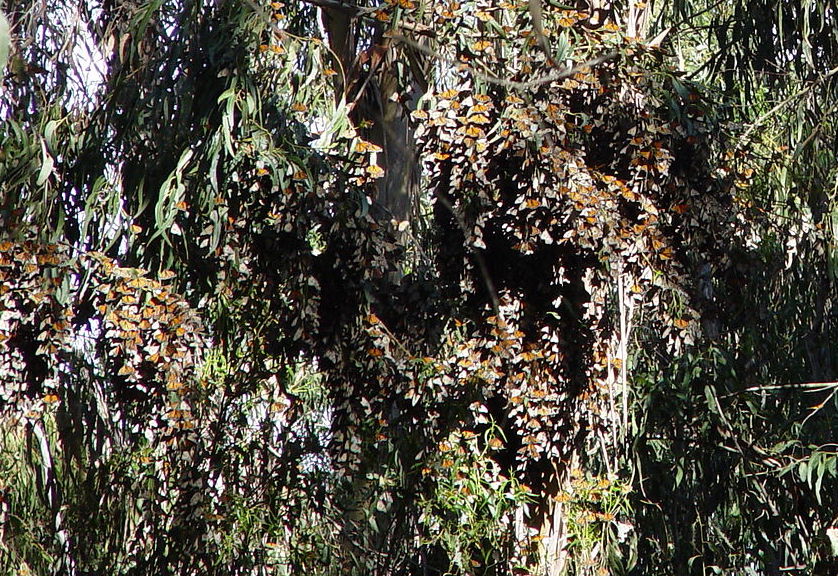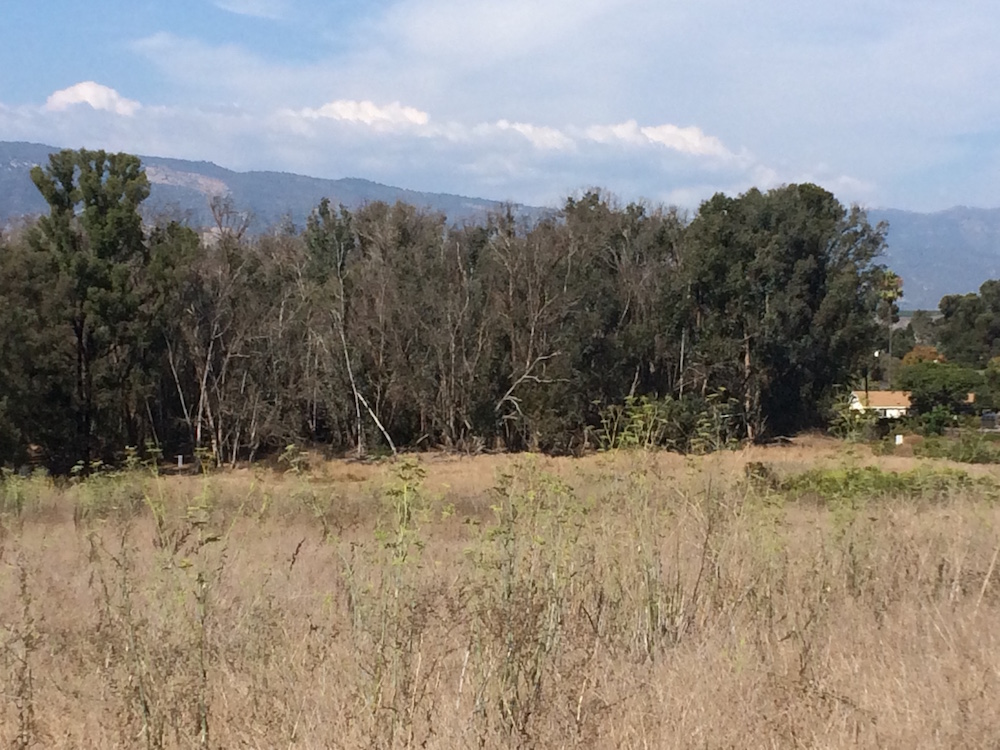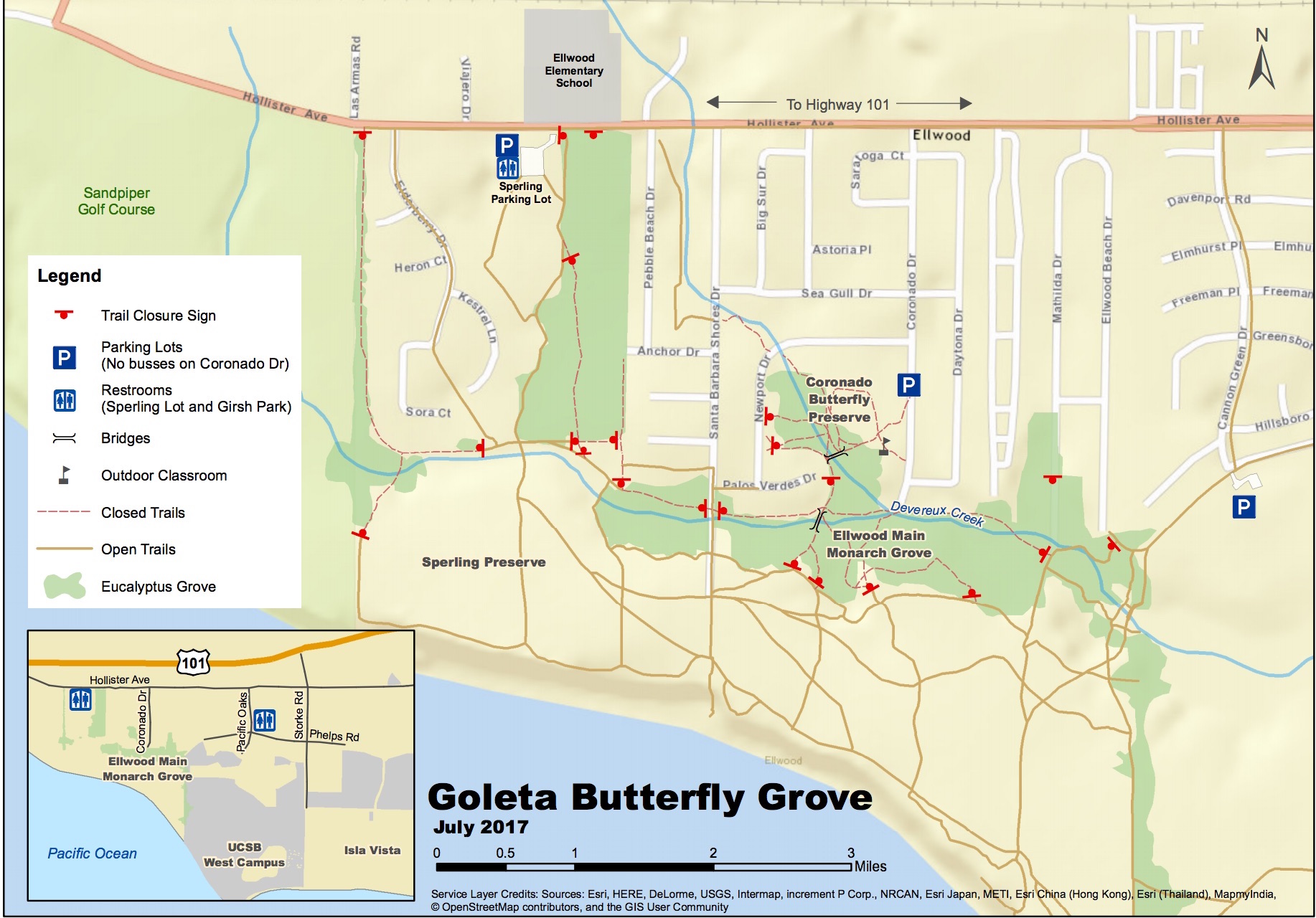Hundreds of Trees Saved from the Ax for Now
Goleta to Remove 29 Eucalypti in Ellwood Butterfly Groves

In the space of two separate City Council meetings this week, Goleta went from cutting down 1,395 dead or dying eucalyptus trees in the Ellwood butterfly groves to removing just 29 of them. The dramatic turn of events was triggered by the Friends of the Ellwood Monarchs, a group that had hired attorney Ana Citrin of the Law Offices of Marc Chytilo to find a solution to the mass removal of trees.
The showdown began after consultants Althouse and Meade, who were working on a habitat management plan for Ellwood’s monarch butterflies, discovered that the historic state-wide drought had dried up and killed fully one-fifth of the 6,000 trees. The eucalyptus forest that comprises the groves not only house monarchs during the winter. They are popular play sites year-round, and threading the trails also gives public access to the wide-open mesa and the beaches beyond.

The prospect of a dead tree falling on a child or a hiker caused the city to close the groves in July. But it had to find a way to reopen the area safely before the monarchs, and the hordes expected to come see them, arrived in October during the winter migration. Citrin said she’d gone out to visit the site, walking along the established trails to find where access might be missing. Along with her clients, she said, they figured out that the potentially dangerous trees existed at the intersection of where the butterflies clustered and the public walked, but not throughout the entire forest.
Their proposed “Option 6,” sent to the council on September 2, just three days before the first meeting, offered short-term and long-term solutions for trails and trees. It suggested opening a trail from Coronado and Rancho Estate, which border the reserve and whose residents must either walk to closed trails or drive to the open one, to reach the beach. Most importantly, it said to assess which trees are actually likely to fall across the trail and to consider pruning or limbing as well as removing them. In other words, hold off on wholesale cutting. That sentiment was echoed by the couple dozen or so people who showed up to speak at both the Tuesday and Thursday council meetings, many of whom mentioned they were missing back-to-school nights scheduled simultaneously on those evenings.
Once those immediate dangers were dealt with, the Friends proposed, the city could figure out how to deal with the rest of the dead trees after first reviewing the effects of their removal on the many species that made their homes in the groves, in addition to the visiting monarch butterflies.
About two dozen butterfly Friends and members of the Goodland Coalition applauded heartily Thursday night after Goleta’s City Council accepted a variation of Option 6 — worked out between planning staff, consultants, Friends, and councilmembers. With the coming October monarch migration in mind, the city will remove about 29 dead trees near trails and clustering sites. The city also agreed to give priority — and consultant funding, if necessary — to completing the Ellwood grove habitat management study, which has been been in process for about seven years. It now has the additional charge of identifying trees that could fall and what to do about the number of dead, dying, and diseased trees.

The drought has killed trees in the Sierra forests in epic numbers, and in coastal Goleta the story is the same: Dry and stressed trees are unable to resist their insect foes. For a grove that houses monarchs, pesticides are out of the question. And even eucalyptus, which public speaker and arborist Ken Knight called “bullet proof,” are succumbing — to the long-horned borer in this case, said Knight. Bringing water to the trees was suggested, but Councilmember Michael Bennett and Knight both pointed to the climate change trend. They asked whether sustaining a non-native species was the smart thing to do. Conversely, the unasked question was whether a young native oak or pine forest would attract monarchs, lacking the height preferred by butterflies.
The importance of monarch butterflies to Goleta might seem unlikely, given the presence of a hi-tech business sector and a university. But the city identifies so much with the insect that it holds a place on the city logo, and the over-wintering butterfly clusters are arguably its number one tourism draw. Not only that, but speakers reminded that it was probably the fight to save the Ellwood bluffs from development decades ago that set off the spark for Goleta cityhood. That spark still ignites Goleta citizens, to which the packed City Council chamber testified.



